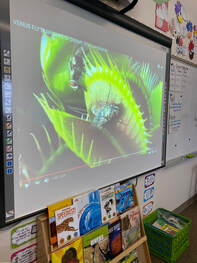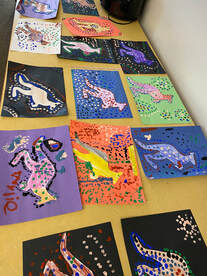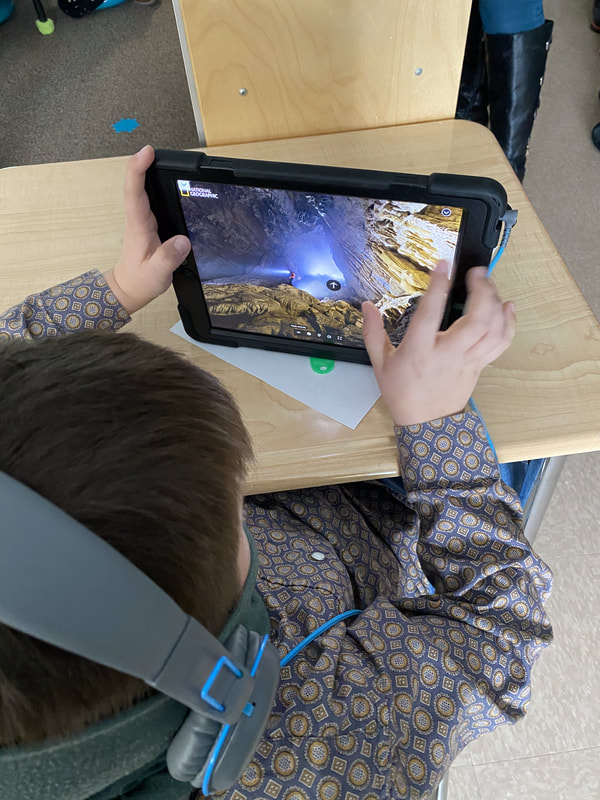|
“Tick, Toc, Tick, Toc…” How many of you pictured the crocodile from Peter Pan? If you have seen Peter Pan this simple phrase brings you back to the scene where Captain Hook realizes he is not alone in the water. As the viewer you are immediately engaged. You have background knowledge of what could happen to Captain Hook, you are wondering why the crocodile sounds like a ticking clock, and you continue watching because you need more! This is not the time to pause the movie to get a snack. The movie has your complete attention and that was their goal. You have been hooked! What is a Hook?A hook is when a teacher uses an engaging way to grab their students' attention before the lesson. Hooks can be used to connect background knowledge to the lesson, bring excitement into the students' learning, and/or provide objectives to the content. Hooks can be short around 2-5 minutes with a short video, photograph, sound clip or they can take some time by doing a virtual field trip or a movement. Think about your classroom of students. What do they respond to best? What are their interests? Why Hook Them?You’re standing at the front of the classroom. One student is playing with his shoe laces. Another student is watching what is happening out the window and about 8 others are daydreaming about what's for lunch and what they’re going to play at recess. Diving into rigorous content when the majority of your class is not cognitively present is for a perfect storm for a flopped lesson, confused students, and a teacher walking away frustrated. Hooks give teachers that edge they need to bring students attention back to the classroom, spark their interest, and give them the boost of energy they need to delve into the upcoming content. Did you know that the synonyms for the word “Hooked'' are enamored, captivated, absorbed? Are those not the words we want as teachers to describe our students in the act of learning!? If that alone doesn’t convince you to incorporate hooks into your lessons, maybe these reasons will! Student Engagement Student Motivation Attention Grabber Leads into asking questions (lingering questions) Sparks Curiosity Creates an event that students can connect to Makes content feel more relatable and relevant Builds classroom community and classroom culture A vehicle for Deeper Discussions FUN Now that we have given you some background on what a lesson hook is and why it's so beneficial, it's time to get to what you all have been waiting for...ideas on how to implement this into your teaching! Below, we have listed some hook ideas that can be modified to any grade level or content area. Hook IdeasEngaging Photo: Sparks lots of discussion and predictions. Mystery Box: Put different items in the box to give clues to what you will be learning about. Students make predictions and discuss what they believe these objects have to do with the upcoming learning. Check out Matt Miller's blog on “Unboxing” for some great ideas! Our mystery/unboxing video was created in Flipgrid! Listen Up! Music/Sound Clips: Create or find short music or sound clips that lead to the topic of the lesson.This could be a song, verse, or sounds. If you are teaching a lesson about an ecosystem put together or find sounds of animals you might hear in that ecosystem. For an older grade, if you are studying different important historical moments take small recordings like the MLK speech to play. Short Book or Paragraph: Find a reading that engages students and gives them a clue as to what they will be learning about. Gallery Walk: Many times gallery walks are used at the end of a lesson/unit to showcase students’ work. However, this activity does not always need to come at the end! Have your lesson/unit start with a gallery walk. Students will observe, gather information, and ask questions. It is a great way to spark their curiosity and guide their inquiry. Get up and MOVE!: Kinesthetic movements are a great way to engage students at the beginning of a lesson. There is also research showing that integrating movement with concepts/skills taught, students are more likely to remember those concepts/skills. And… It's FUN! (In the video clip we have students up and moving using augmented reality learning about different animals in the desert habitat.)
If you are a beginning “hook” user it can be challenging to decide or know what to do. Remember to keep your students in mind and to start off simple. Now that you have some background knowledge and ideas, go give it a try! See for yourself how these lesson hooks engage students, keep them motivated, and bring back the joy of learning in your classroom! Student engagement isn’t ‘silliness’ that defeats true academic work. It can be a catalyst to the learning of our dreams.”
0 Comments
Leave a Reply. |
AuthorMegan and Kara are educational leaders, professional development experts, and current classroom teachers who are improving the way instruction is being delivered in the standard classroom. Archives
May 2024
Categories |





 RSS Feed
RSS Feed
